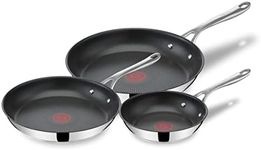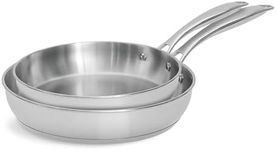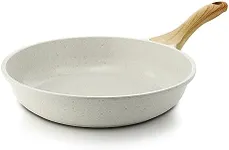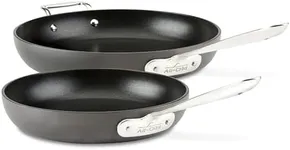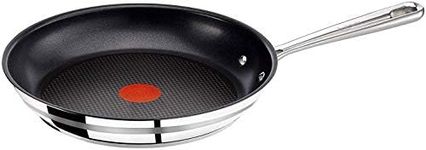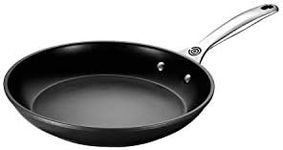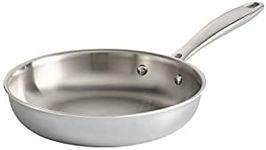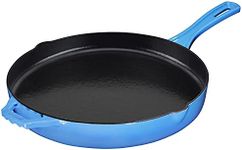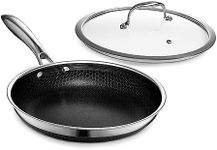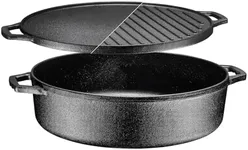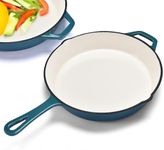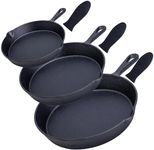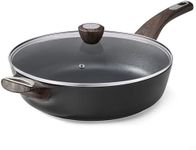Buying Guide for the Best Induction Frying Pan
Choosing the right induction frying pan can make a big difference in your cooking experience. Induction pans are specially designed to work with induction cooktops, which use magnetic fields to heat the pan directly. When shopping for an induction frying pan, it's important to look beyond just the price or brand and focus on the features that will best suit your cooking style and needs. Understanding the key specifications will help you make a smart choice and ensure your pan performs well and lasts a long time.Induction CompatibilityInduction compatibility means the pan has a magnetic base that works with induction cooktops. This is crucial because not all pans will heat up on an induction stove. To check, see if a magnet sticks to the bottom of the pan—if it does, it's induction compatible. Some pans are labeled as 'induction ready' or 'induction compatible.' Always confirm this before buying, especially if you only have an induction cooktop.
MaterialThe material of the frying pan affects how it heats up, how evenly it cooks, and how easy it is to clean. Common materials include stainless steel, cast iron, and nonstick-coated aluminum. Stainless steel is durable and resists rust, but may need a layer of aluminum or copper for better heat distribution. Cast iron holds heat well and is great for searing, but is heavy and needs seasoning. Nonstick pans are easy to clean and good for low-fat cooking, but the coating can wear out over time. Choose the material based on your cooking habits—if you want easy maintenance, go for nonstick; if you want durability and versatility, stainless steel or cast iron might be better.
Base ThicknessBase thickness refers to how thick the bottom of the pan is. A thicker base usually means better heat distribution and less chance of warping over time. Thin bases heat up quickly but can create hot spots and may warp with high heat. Medium thickness is good for everyday cooking, while a thick base is best for even cooking and durability, especially if you cook at high temperatures or use the pan often.
Size and ShapeThe size and shape of the frying pan determine how much food you can cook at once and how well it fits on your cooktop. Common sizes range from 8 to 12 inches in diameter. Smaller pans are good for single servings or small kitchens, while larger pans are better for families or batch cooking. The shape matters too—sloped sides are great for flipping and stirring, while straight sides help contain liquids. Pick a size and shape that matches your typical meal size and cooking style.
Handle DesignThe handle design affects how comfortable and safe the pan is to use. Look for handles that stay cool during cooking and are securely attached to the pan. Some handles are ergonomically shaped for a better grip, and some are oven-safe, which is useful if you want to finish dishes in the oven. If you have small hands or limited strength, a lighter pan with a comfortable handle will be easier to use.
Oven and Dishwasher SafetyOven and dishwasher safety means the pan can be used in the oven or cleaned in the dishwasher without damage. Not all induction pans are oven-safe, especially those with plastic handles or nonstick coatings. If you like to start dishes on the stove and finish them in the oven, check the maximum oven-safe temperature. Dishwasher-safe pans are easier to clean, but hand washing can help them last longer. Choose based on your cooking and cleaning preferences.
